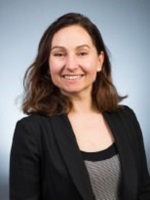
Interview with Marianne Aznar
Chair of the ESTRO 2023 Physics Track
PDF Version
In your area, which topics received the largest number of abstracts?
We received the second highest number of physics abstracts on record, 870! The category with the highest submission was “optimisation, algorithms and applications of photon and electron beam treatment planning”, closely followed by “detectors, dose measurements and phantoms”. Other categories with a high number of submissions were “radiomics, modelling and statistical methods” and “intra-fraction motion management”. Advanced modalities such as proton therapy and the MR-linac are also increasingly represented.
Can we expect many international collaborations?
This year’s track highlights many international collaborations in medical physics. For example, the joint session with the European Federation of Organisations for Medical Physics (EFOMP) focuses on “international efforts in medical physics”, and it will include a discussion of large projects such as the European Union-funded study that is looking at health effects of cardiac fluoroscopy and modern radiotherapy in paediatrics (HARMONIC) and work that is aimed to improve the scientific basis and clinical practice of radiation protection in medicine (MEDIRAD). There will also be a report from the EFOMP working group on clinical trials and reports from the ESTRO physics workshops. These are gaining popularity and leading to increased harmonisation and use of best practice in advanced treatments such as stereotactic body radiation therapy (SBRT), and to increased optimisation in routine practice. Regarding the latter two examples, there will be a teaching lecture entitled “Survey results and systematic review of the dosimetry information in papers on SBRT clinical trials” and a talk entitled “Justification and dose optimisation in IGRT [image-guided radiation therapy] practices”.
Can you highlight any emerging or innovative trends in research?
There is an increased use of artificial intelligence and deep learning techniques in all areas of medical physics, from quality assurance to image processing and modelling. Investigations on automated segmentation and treatment planning are also more numerous this year: we anticipated this trend and created a dedicated submission category, “automation”, which received 93 abstracts! I am looking forward to heated debates on the benefits and challenges of automation: look out for the pitch session “Will automation of radiotherapy tasks solve more problems than it causes?” to provide perspective on this trend!
Why should you not miss ESTRO 2023 as a medical physicist?
The programme covers everything from cutting-edge research to best clinical practice in all aspects of medical physics, from dosimetry to image processing. We are building on the success of the “mini-oral” format, giving participants more opportunities for presentation and interaction. There is also a strong interaction among the tracks this year; e.g., I believe this is the first time we have a joint physics-radiotherapist (RTT) session (in the RTT track): “Multidisciplinary advancement in stereotactic arrhythmia radiotherapy.”
Is there any other aspect of your track that you would like to draw attention to?
I am looking forward to a new format in the joint session with the American Association of Physicists in Medicine entitled “Big data, big headache”. In this session, young investigators will present the challenges of collecting and curating large numbers of treatment plans, images (for planning or follow-up), etc… I think many ESTRO participants, including radiation oncologists and RTTs, will relate to these challenges and learn from the creative solutions presented!

Marianna Aznar
Chair of the ESTRO 2023 Physics Track
ESTR0 2023 Early registration deadline: 22 February 2023
ESTRO members benefit from an extra discount.